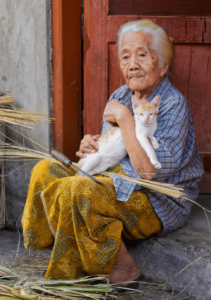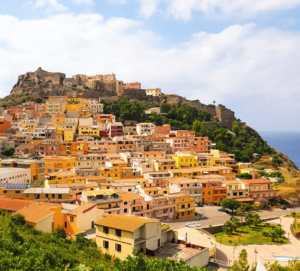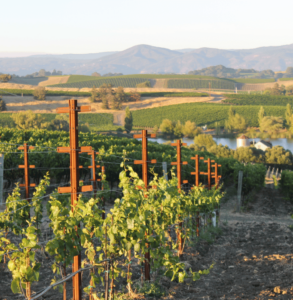In the quest for longer, healthier lives, few ideas have captured the public’s attention like the concept of the “The Blue Zones.” Coined by journalist Dan Buettner, Blue Zones refer to regions where people seem to live the longest, healthiest lives. 
Buettner’s 2008 book, The Blue Zones: Lessons From the Healthiest Places on Earth presents Sardinia, Okinawa, Loma Linda, and Nicoya as havens of longevity, each offering dietary and lifestyle insights for the modern civilian to learn from. However, as this idea gained traction, contradictions in the narrative became apparent for those who read between the lines. When examined closely, the Blue Zones story reveals a complex interplay of cultural practices, historical context, and editorial bias; let’s take a look.
What Are the Blue Zones?
The original Blue Zones are four geographically distinct regions:
- Sardinia, Italy: Known for its mountainous terrain and pastoral lifestyle.
- Okinawa, Japan: Celebrated for its traditional diet and strong social networks.
- Loma Linda, California: A unique community of Seventh-Day Adventists with specific dietary and lifestyle practices.
- Nicoya Peninsula, Costa Rica: A rural area with nutrient-dense diets and community-centered living.
Buettner’s book distilled observations into lessons like “eat mostly plants,” “drink goat milk,” and “take time to downshift.” These recommendations became the cornerstone of the Blue Zones brand, influencing medical advice, public health policies, and popular media. But how accurate and applicable are these lessons?
The Contradictions in the Blue Zones Narrative
While the Blue Zones book presents itself as a roadmap to longevity, there are some inconsistencies in the picture that’s painted. Let’s look into each major region.
Sardinia: Lean and Plant-Based?
In Sardinia, Buettner’s accounts of centenarians like Giuseppe and Tonino paint a vivid picture of life in a mountainous, pastoral community. Giuseppe’s diet included fava beans, pecorino cheese, bread, and meat when affordable, while Tonino relied heavily on sheep and goat products, wine, and meat from his livestock.
The takeaway lesson from this chapter? “Eat a lean, plant-based diet accented with meat.” This conclusion directly contradicts the evidence presented. Sardinians valued meat and dairy, with sheep’s milk products being their primary source of protein. Furthermore, there’s no data in the book suggesting that their diet was particularly lean. These inconsistencies undermine the book’s authority and highlight a troubling pattern: cherry-picking evidence to fit a predetermined, plant-based, narrative.
Okinawa: A Land of Sweet Potatoes and Pork
Okinawa, often cited as the epitome of longevity, offers another example of editorial distortion. Historically, Okinawans relied on sweet potatoes as a staple during times of economic hardship, but modern elders reportedly avoid this food, viewing it as a reminder of poverty. Moreover, pork played a central role in their diet. Dr. Kazuhiko Taira, an Okinawan expert cited in the book, emphasized the health benefits of pork, particularly its collagen and B vitamins.
Yet, the chapter takeaway – “Rely on a plant-based diet” – ignores these cultural realities. The narrative also diminishes the significance of fish and other traditional foods while again promoting a vegetarian agenda. Such omissions distort the richness and complexity of Okinawan dietary practices.

Loma Linda: The Adventist Influence
The Loma Linda chapter aligns closely with the dietary ideals promoted by the Seventh-Day Adventist Church, which owns the Blue Zones brand. Adventists advocate for vegetarianism and renounce processed foods, and these principles are faithfully reflected in Buettner’s account. Unlike the other Blue Zones, there are no glaring contradictions in this chapter.
Adventists advocate for vegetarianism and renounce processed foods, and these principles are faithfully reflected in Buettner’s account. Unlike the other Blue Zones, there are no glaring contradictions in this chapter.
The influence of Adventist Health Studies, which has shaped much of modern medical thinking about nutrition, certainly raises questions about bias. These studies were conducted by statisticians within the Adventist Church, whose vested interest in promoting vegetarianism could certainly skew results. This calls into question the scientific objectivity of the conclusions drawn about Loma Linda’s longevity practices.
Nicoya: Lard, Eggs, and Pork
In Nicoya, Costa Rica, the disconnect between observation and recommendation is particularly stark. Buettner’s interviews reveal a diet rich in animal products: eggs, pork, and lard are dietary staples. One centenarian, Don Faustino, buys two liters of lard weekly to feed his family of eight, suggesting animal fats constitute a significant portion of their caloric intake.
Despite this, the chapter’s takeaway minimizes the role of these foods, focusing instead on “drinking hard water” and “eating a light dinner.” The Blue Zones website goes further, claiming Nicoyans consume only 5% of their calories from meat, a figure that appears inconsistent with the detailed descriptions in the book.
Addressing the Environmental Angle
The environmental implications of the Blue Zones diet are also worth looking at. Promoting vegetarianism as the primary takeaway ignores the sustainability of traditional, omnivorous diets. Many Blue Zones communities raise livestock, practice rotational farming, and utilize every part of the animal, resulting in minimal waste.
In contrast, processed vegetarian products like protein powders and vegetable oils – often marketed as healthful alternatives – have significant environmental costs. Highlighting ancestral food systems and local, seasonal eating could provide more practical and sustainable guidance.
The Adventist Influence
The Blue Zones brand was acquired by the Seventh-Day Adventist Church in 2020, solidifying its orginal alignment with vegetarian principles. This affiliation affects how Blue Zones narratives are framed and disseminated. Through entities like the American College of Lifestyle Medicine (ACLM), the Adventist Church exerts significant influence on medical education, promoting plant-based diets as the gold standard for health.
how Blue Zones narratives are framed and disseminated. Through entities like the American College of Lifestyle Medicine (ACLM), the Adventist Church exerts significant influence on medical education, promoting plant-based diets as the gold standard for health.
While vegetarian diets can be helpful in for some people in certain circumstances, the overt bias in Blue Zones messaging undermines its credibility. By ignoring the role of animal products in traditional diets, the narrative dismisses important cultural and nutritional contexts of diversity in nutrition.
Universal Lessons from the Blue Zones
Despite these contradictions, the Blue Zones concept still offers very valuable insights into longevity that we can learn from. Four commonalities emerge:
- Geographic Isolation: Communities in Blue Zones rely on locally sourced, fresh foods.
- Whole Foods: Diets are rich in unprocessed, nutrient-dense foods.
- Moderation: Meals are portioned sensibly, and overeating is avoided – caloric restriction of some sort is a near constant in any healthy society.
- Strong Community Ties: Social connections and shared meals foster well-being.
These factors, rather than strict dietary prescriptions, appear to underpin the longevity observed in these regions.
The Role of Media and Misinformation
The oversimplification of Blue Zones diets in media and public health campaigns distorts the reality of traditional practices. By reducing diverse cultural diets to a single narrative, we risk losing valuable lessons about the adaptability and resilience of these communities.
What We Can Learn
The real takeaway from the Blue Zones is certainly not about adopting a vegetarian diet but more so about embracing traditional, nutrient-rich foods, local agriculture, and the joy of preparing meals with and for your community. Eating seasonally, avoiding processed foods, and prioritizing social connections are timeless principles that undeniably transcend geography.
Conclusion
The Blue Zones story, though compelling, is far from a definitive guide to longevity. Its contradictions and biases serve as a reminder to approach these blanket-statement narratives carefully. True health and environmental sustainability lie in respecting cultural diversity, understanding historical contexts, and embracing holistic, ancestral approaches to eating.
By focusing on these universal lessons, we can build a more nuanced and inclusive understanding of longevity – one that empowers individuals to thrive in harmony with their heritage and environment instead of sticking with a dogma that someone just says “is the right way”.








